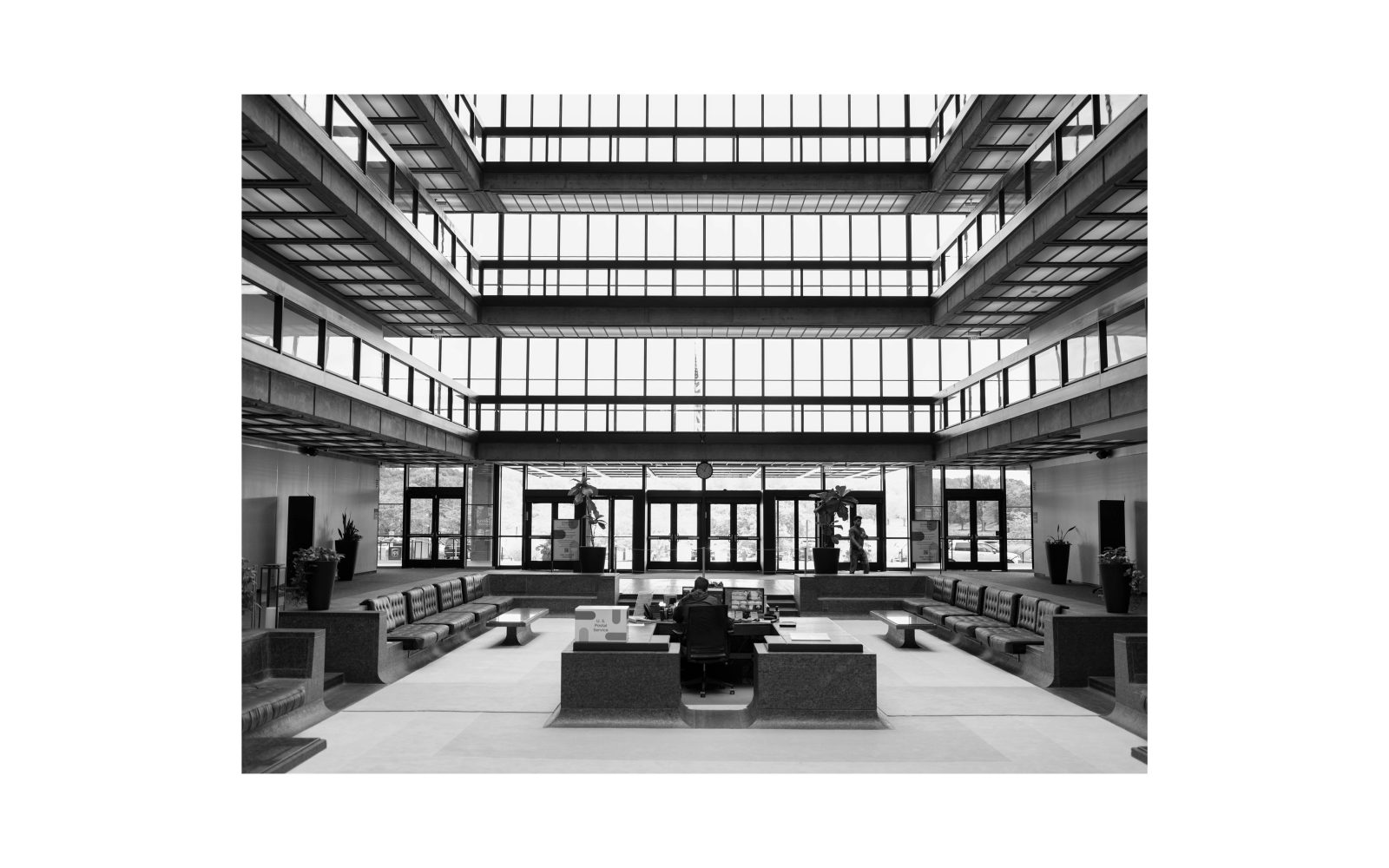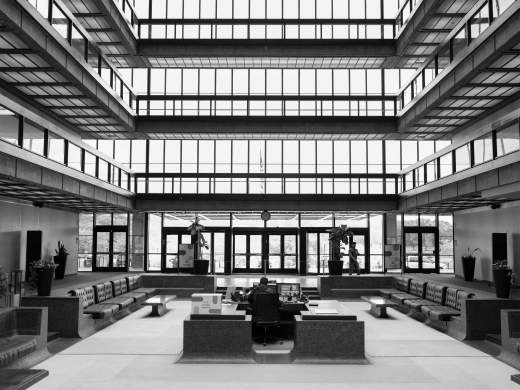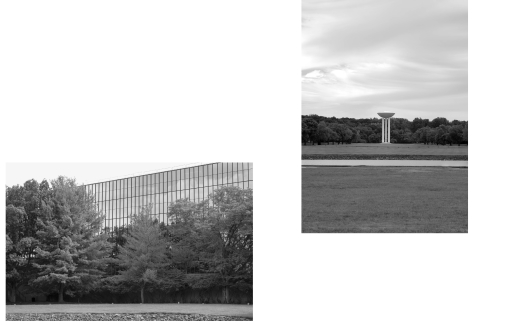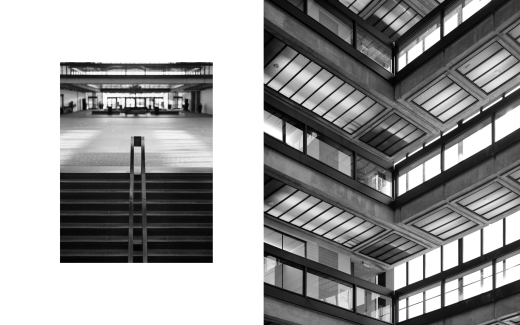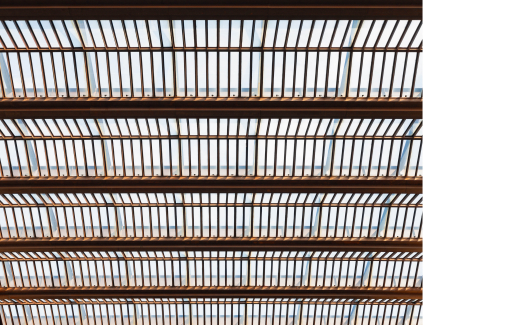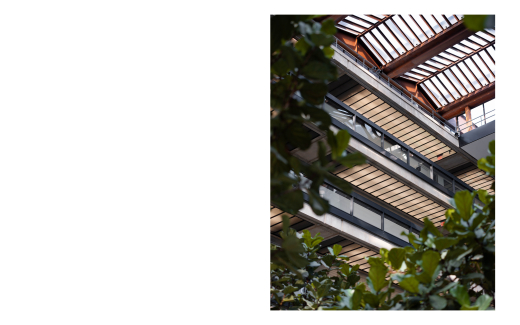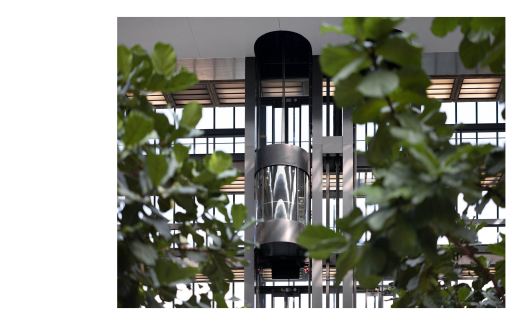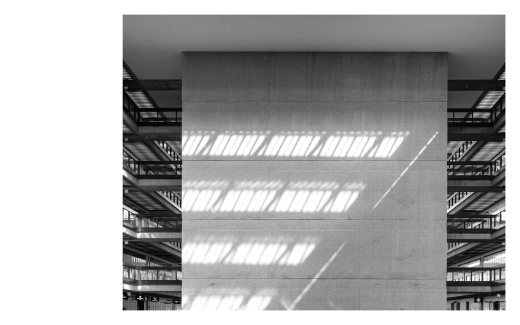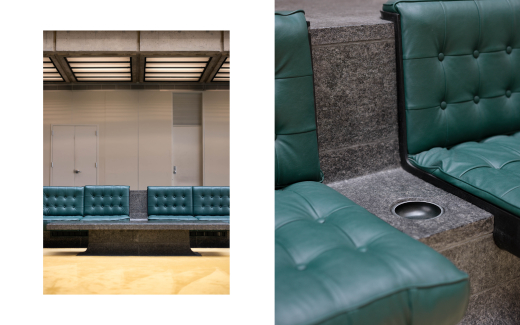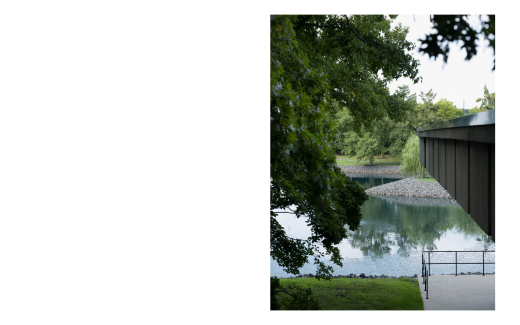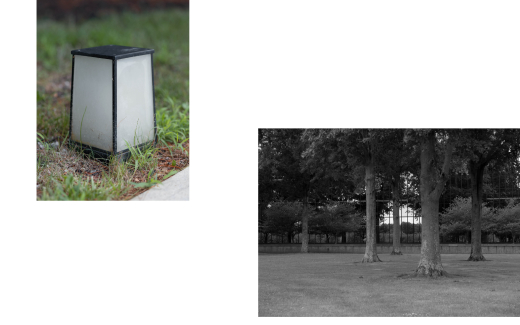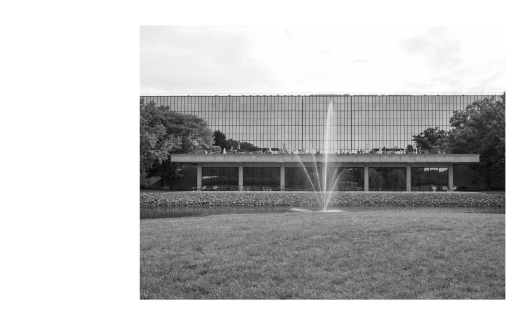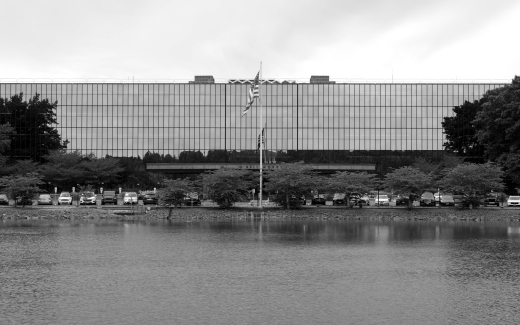You see it through the trees as the road winds closer, a sliver at first (a corner) dark and linear and alien against the lush green landscape and tan-colored roofs of banal suburban development. Turning right off Crawfords Corner road into the campus, it emerges like a ship, waiting, its massive mirrored hull reflecting back the world and sky, pulling you in with some unknown force.
Bell Labs: A Corporate Campus Visual Essay
Author
Thomas Hassler
Tags
As you walk towards the front entrance, up the concrete stairs under the hundreds of orange glowing lights, you are met with your double, moving toward you in the reflection. It’s difficult to look away, because every angle is the same. As you get closer a shift occurs, revealing a glimpse of what's inside, and when the doors open you're immediately taken by light from every direction. Moving inward – as if walking between a veil into a new dimension – the entire structure suddenly appears wider, the ceiling somehow twice as tall as it was from the outside, and the further in you go the more the space reveals itself; the more you become captured by its presence.
The main hall of Bell Works overwhelms. Its size and structure and angles demands a higher awareness of time and place. As you move through the expanse, gazing upwards at the geometric glass ceiling, or towards the monolithic concrete slabs that hold the entire structure together, one can easily imagine the sense of awe when the doors opened for the first time seventy years ago. I felt it everywhere I walked. Every aspect of the building provided something new to experience.
Walking around, I knew I’d never felt the presence of a building quite like this before. It’s relaxing in a way, perhaps because of its symmetry and order (the mind can rest because the form isn’t complicated, on the surface). But it’s also incredibly inspiring. Arguably the work done at Bell Labs in the fifties through the seventies was some of the most groundbreaking scientific advancements in technology. What impact did the building have on those scientists? How did they feel in this place, and did that change the way they worked and collaborated and experimented?
I spent an entire day wandering the atrium and manicured outdoor walkways feeling, thinking, and seeing what I imagined Eero Saarinen wanted (or didn’t want!) the inhabitants of this building to see and feel and think, my camera searching for compositions and forms that I hoped would reveal a version of the building that wasn’t the current and familiar depiction of the place. Saarinen’s design impresses as much as it provokes; the otherworldly reflections off the facade; the blissfully smooth curves of the sunken granite lobby and stairways; the linear walkways that seem to float along the perimeter of the atrium like walkways on a ship’s deck. You can’t help but feel transported – time moves differently within the space – and I wanted to try and capture this essence.
This is the power of the corporate campus. They are places to work as much as they are places to live (to experience life in a distinctive way). Designed to be ecosystems, Bell Works is no different, with its shops, living spaces, offices, gyms, and natural escapes. It’s a truly successful preservation of architecture, and of an idea so completely encompassing it’s impossible to ignore.
As Saarinen intended, Bell Works is once again a utopia of ideas, of human interaction, and good design, built with exacting precision and (I believe) a desire to ignite imagination and well-being in a setting unlike any other.
About the Photographer
Thomas Hassler is a photographer and artist based in New York City. His work focuses on the relationships between memory, sense of place, and transformation. He also specializes in brand marketing and creative strategy, currently at Design Within Reach.
